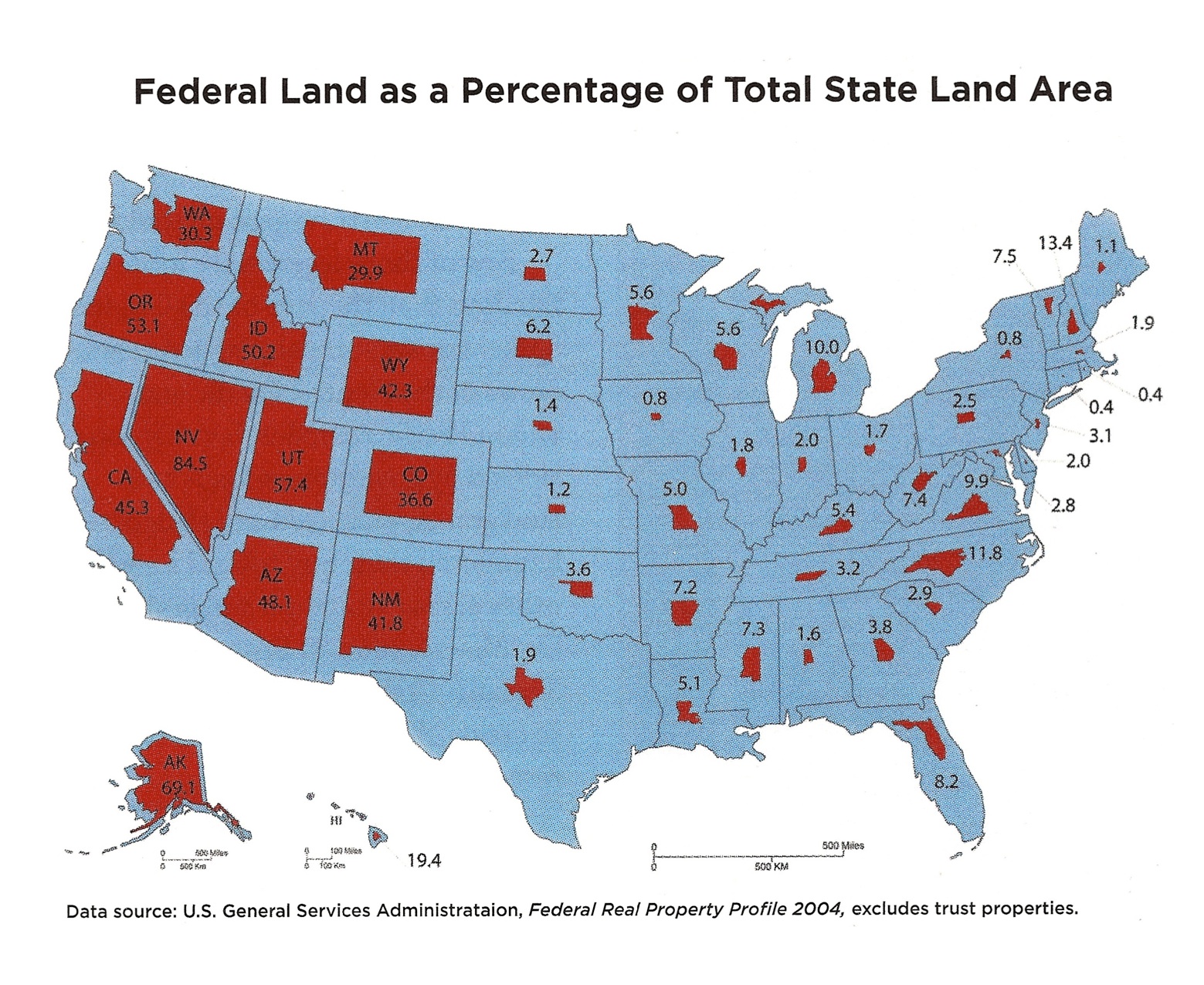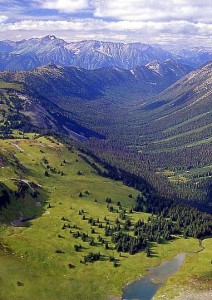The recent arguments before the Supreme Court on the Voting Rights Act raised questions about whether some states are not being treated on an “equal footing” with respect to others. These arguments prompted some thought about what equal footing might mean with respect to the so-called “public lands” states.
Assuming that many of my readers (further assuming that I have “many” readers) may not be familiar with the term, let me take time out to explain: “public lands” states are states where much of the real estate is not privately owned, or even owned by the state, but by the federal government. And when I say “much,” I really mean “most.” Champion in this sweepstakes is Nevada, where about 81% of the total land area is owned by Washington. In Alaska, which is number two, north of 60% of the land mass is federally-owned.
There are usually considered to be 12 of these states, all of them lying to the west of the eastern border of Wyoming, and all of them with more than 25% federal land ownership. Three of these states (California, Oregon and Washington) are politically somewhat different from the other nine, in that the federally-owned lands are inland and sparsely populated, overwhelmed by the population centers along the Pacific Coast. Hawaii also lies west of Wyoming, but it is not usually considered to be a public lands state. Land ownership in Hawaii is anomalous for a number of reasons.
To put this ownership pattern in context, non-public lands states typically have federal land ownership of less than 5%. Lowest is Connecticut, with .22% federal land ownership. Looking at aggregates, the average federal ownership in the 12 public lands states is 45.26% and in the non-public lands states it is 4.19%. The lowest figure for federal ownership in the public lands states is Oregon, at 26.7%; the highest in the non-public lands states is New Hampshire, at 12.96%. To emphasize the point: the lowest-ranked public land state has more than twice as much of its land-mass in federal ownership as the highest-ranked non-public lands state.
I guess that’s why they call them “public lands states.”
But to get a true picture, we need to add to this federal land the lands owned by the states themselves. That further reduces the amount of land in private ownership in the public lands states. The average acreage that is privately held in public lands states is 44.9%. Adding state lands in the non-public lands states doesn’t change things much. Average private holdings in these states amounts to 90.99%.
Even these numbers understate the impact of federal land ownership in public lands states, because of the pattern of land ownership. The federal land is not concentrated in a compact and contiguous block. It is typically interspersed with state and private land in a “checkerboard” pattern, such that management of the federal land can dictate management of state and private land, or even impede that management.
This ownership pattern has serious implications for public policy in the public lands states. Consider the impact on property taxes. It is evident that a state where less than 50% of the land is subject to taxation is going to have a harder time raising revenue from that source than is a state where 90% of the land is subject to taxation.
Congress has recognized that disparity, and has enacted legislation providing for federal Payments in Lieu of Taxes (PILT) to compensate for lands not subject to taxation. These payments are made directly to the county governments, which is where property taxes are normally levied.
Not surprisingly, PILT payments do not satisfy the county governments. They tend to be irregular, both in time and in quantity, depending on budgetary constraints. The counties have no real control over them, and can not reliably count on them to offset the impact of federal land ownership. No public lands state recognizes PILT (and the smaller Secure Rural Schools payments) as adequate compensation for the loss of real estate within its borders.
Even if the compensation reached levels the states thought adequate, there would still be resentment over the federal presence, given its size and impacts. Put succinctly, the public lands state do not consider themselves to be on an “equal footing” with respect to the other states in the Union.
How did this situation come about, and are the western states to expect permanent colonial status? Federal ownership of this much land raises philosophical, practical, economic, and legal problems. Certainly there are problems for the “owned” states; are there problems for the owners as well?
These are questions I would like to address, but they will have to wait for the next installment. For the moment, just contemplate this map, which shows the size of the federal presence in each of the 50 states. It is hard to argue that the states are enjoying the equal treatment from the Union guaranteed by the Constitution.
. . . . . . . . . . . . .
Gordon S. Jones is a senior fellow at Frontiers of Freedom. Jones is also an adjunct professor at Utah Valley University and Salt Lake Community College. Jones has extensive experience in Congress, in public policy, and elective politics.


